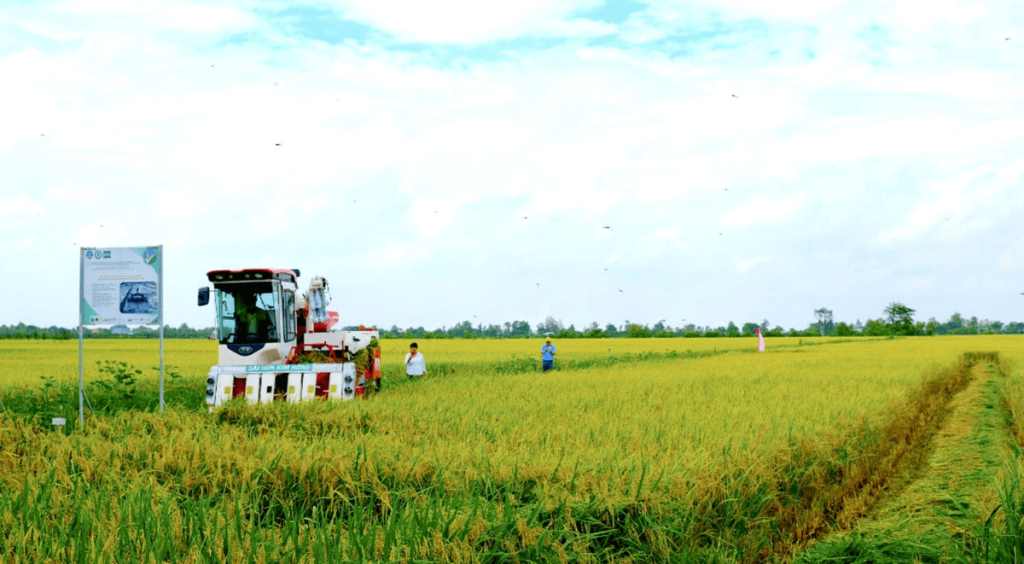Tags
Vietnam rice branding faces multiple hardships

It is difficult for Vietnam to develop and protect a national rice brand amidst forgery, imitation, and financial struggles, according to local experts.
Ho Quang Cua, who works with the ST25 rice label, named the best rice variety in the world twice in 2019 and 2023, said Vietnam has no rice brands presently — so he rolled up his sleeves to build his own.
However, the difficulties he encountered were shocking.
He said in the beginning, he was like a fish out of water. Incidents during the best rice competitions taught him many lessons and he remains determined to grow.
After ST25 rice was named the best rice in 2019, Cua’s family began to complete trademark registration procedures. At the same time, various domestic and foreign enterprises rushed to register for the ST25 trademark protection.
In 2021 alone, 30 businesses applied for exclusive trademark registration for ST25 rice. Some companies even registered the exclusive rights for the word ST25.
After hiring an international law firm and getting support from many organizations, Cua obtained the trademark for ST25 in late 2023.
Without prompt acts and approval from the U.S. Patent and Trademark Office, the word ST25 would not be allowed to be included on rice packages, Cua noted.
Tran Truong Tan Tai, general director of Vietnam Rice Co. Ltd. (Vinarice), said that building strong rice brands involves several critical steps — sending rice samples to partners and committing to meeting their quality standards, with certification from international organizations to ensure compliance.
The company must also address social and human value requirements, particularly implementing policies that benefit workers, especially women.
As part of developing raw material regions, foreign partners will frequently send personnel to oversee operations onsite.
Capital needed to improve rice quality
Many individuals shared that they need huge capital to develop high-quality rice.
Nguyen Hong P., a resident of southern Dong Thap Province, said thanks to a loan from Ho Chi Minh City Development Joint Stock Commercial Bank (HDBank), his family had capital for rice trading.
Banks offer diversified service packages, P. noted, adding that he would borrow another bank loan to expand his business.
Nguyen Van Hung, director of the Thang Loi Agriculture Service Cooperative in Dong Thap, expressed hopes for increased access to capital to improve canals and irrigation infrastructure.
These upgrades are intended to expand the cooperative’s high-quality rice production area to 150 hectares.
During the 2024 autumn-winter rice crop season, Dong Thap implemented a program under the Mekong Delta’s one-million-hectare high-quality, low-emission rice production initiative.
The model successfully cut production costs by 20-30 percent, boosted productivity by 10 percent, and increased farmers’ incomes by 20-25 percent.
An HDBank representative revealed that since the beginning of the year, the bank has disbursed nearly VND5 trillion (US$197 million) to a leading agricultural service group.
The bank has also rolled out various fee and interest rate incentives for both individual and corporate clients involved in trading pepper, coffee, cashew nuts, and rice.

Beginning from material areas
According to Tai from Vinarice, to have high-quality material areas, the company pays attention to details around controlling the input qualit, and invest in machines and factories that will preserve rice and control residues.
The company has purchased rice cultivated under the shrimp–rice cultivation model in Bac Lieu, Kien Giang, Ca Mau, and Soc Trang Provinces.
Under the model, the rainy season is the time for rice cultivation combined with desalinating the fields with rainwater.
In the remaining months, rice fields are inundated by saltwater and thus become shrimp ponds with natural feed and breeding methods.
“We should not be ambitious about quantity and purchase a large volume of rice; with only one batch of poor-quality rice, we will lose the opportunity to develop,” Tai said.
He informed that Vinarice currently exports rice of three brands with the lowest price of about $980 per metric ton and supplies rice of two brands to Co.opmart supermarkets and Winmart convenience stores in Vietnam.
A local rice expert emphasized the importance of creating a unified national brand for Vietnamese rice and securing trademark protection through the Intellectual Property Office of Vietnam, as well as international intellectual property agencies in potential export markets.
Do Ha Nam, vice-chairman of the Vietnam Food Association, highlighted the need for policies to support exporters of branded rice.
He suggested these policies should clearly define state assistance in setting up offices and introducing products to global markets.
Agricultural expert Hoang Trong Thuy noted that Vietnam currently lacks a recognized national rice brand, underscoring the urgency of such efforts.
The Ministry of Agriculture and Rural Development has long advocated for rice branding and has made progress in developing material areas, notably through the launch of the initiative to cultivate one million hectares of high-quality, low-emission rice aligned with green growth goals in the Mekong Delta.
While brands like ST25, Com Vietnam Rice by Loc Troi Group, and Trung An and A An by Tan Long Group have made inroads into markets such as the EU and the U.S., agricultural expert Hoang Trong Thuy noted these brands remain relatively obscure to consumers.
He attributed this to the absence of standardized export criteria for major and traditional markets, the fragmented nature of production, and a lack of large-scale material areas, which complicate the control of rice supply and quality.
Vietnam should learn from Thailand to issue standards for rice
After Thailand’s Hom Mali rice won the best rice title in 1998, the country developed large material areas and standardized processes to ensure its rice quality.
Hom Mali rice packages feature English, Chinese, Filipino, and Vietnamese.
Thailand has also spread the messages of ‘Think Rice, Think Thailand’ and ‘The Rice Bowl of Asia’ to link the Hom Mali rice brand with the nation, thus keeping Thailand’s rice brands in foreign consumers’ minds, Thuy said.
https://tuoitrenews.vn/news/business/20241211/vietnam-rice-branding-faces-multiple-hardships/83336.htmlPublished Date: December 11, 2024






